Kadapa (Cuddapah) is considered one of the backward and perhaps also one of the most remotely situated districts of the State. One hardly realises that the tract covered by the district carries the foot prints of some of the most illustrious rulers of South India.
Tipu Sultan, Haidar Ali, Sivaji, Krishnadevaraya, Pratap Rudra are some of the names associated with the history of this tract. The holy names of the rivers that cut across the district give the land a sanctity of their own. The district is made up of a series ofbeautiful valleys through which flow Papaghni (the destroyer of sin), Chitravati (a Hindu Goddess), Mandavya.(a Rishi), Pennar or Pinakini (“the sister of Pennaki another name for Siva meaning the skull-bearer, alluding to one of his incarnations during which he killed a Brahmin, and as a penalty, a skull was attached to his hand until the sin was removed by Penance”). Penneru which is the most important river flowing right through the district has a legend which is incorporated in a Sasanam (inscription) at Gandikota.
Once subject to a curse, Agastyamaha- muni was changed into a river and doomed to flow northwards from the foot of the God at Nandidurg, and to furnish, on its way to the ocean, fresh water for the innumereus Rishis or holy men who would settle on its banks, until at last, in the course of countless centuries, the curse would be removed. The Seshachalam range “of hills that pass through this district and crowned ultimately with the holy shrine of Tirumala in Chittoor district is named after the Serpent God who served as the bed of LordVishnu. Thus, Cuddapah tract associated with such holy rivers and hills should, at one time, has been considered as a truly holy land. This tract has also, been identified as the great forcst of Dandaka consort Sita wandered in their landuntil about the 10th or the 1 1th Century A D.
It has been observed that “each stream in this part of the country has its song to sing and every hill its story to narrate” but it is the regret of ths historians that “unfortunately they do not narrate them, or, if they do, do it in language unintelligible to the modern historian. These streams and mountains being the only depositories of the chronicles of Cuddapah, the early history of the district, is, and is likely to remain, a sealed book”.
The area comprising Cuddapah district and its neighbourhood was situated on the borders of several great kingdoms of South India which often warred with each other. The tract was the victim of ravage of the victorious hordes of armies. The district was only the tributary of the distant capitals- The local chieftains that had established themselves in the river valleys of the district owned their allegiance to the changing rulers at the top. “Almost without exception, each of the rivers has a more or less broad . belt of alluvial soil rising gradually from either bank; and each of these river basins has, in times gone by, been the centre of a separate political unit – a little state restrained, as it was protected by .the line of the hills that hemmed it in on either side. Thus the level lands of the Pennar round Cuddapah and east and west of that town formed the dominions of the Sidhout Raja, and later the seat of the Nabob of Cuddapah; the valley of the Cheyyair was the Raj of Chitvel;
The broad plains of Kundu river belonged to the Poligar of Nossum; those near Gandikota to the petty Raja of that place, and the narrow and the barren defile through which runs the Sagalair supported the families of the Pullala Cheruvu and Porumamilla; and this physical isolation of every separate nook and corner of this wild country is the key that unlocks its past history, the fact that explains the successive uncontested conquest, and long continuity of foreign occupations that left the tenants undisturbed under every new master.
The Hindu Poligars served the Mughal Emperors, Vijayanagar Princes, Hyderabad Nizams, Maharata Rulers and the Mysore Sultans, with the most perfect adaptiveness to their own interests and the will of their temporary rulers”.
The earliest known dynasty that held sway over what can be now roughly called the area comprising the district of Cuddapah, was that belonging to the Pallava Kings. They controlled an extensive territory which included the present Nellore districted probably all the Telugu country on the East Coast as Krishna. From Nellore they penetrated for a time into the north of Cuddapah district, presumably following the course of the Pennar upstream, for, it is in the neighbourhood of this river in the taluks of Jammalamadugu and Proddatur, that the earliest historical evidence, in the shape of lithic monuments, has been collected. In the latter part of the fifth century the growing power of the Pallavas seems to have been checked by the Cholas in the south; and in the, north the Pallaya King suffered defeat at the hands of a Chalukyan adventurer named Vijayaditya who claimed to have come from Oudh.
This battle is said to have taken place in Cuddapah district as file cjueep of Vijayaditya seems to have taken refuge at Pedda Mudium in Jammalamadugu taluk after the deth, of her husband in battle. Subsequently the Cholas al so overran the Pallava territory and established themselves for a couple of centuries in the black cotton country on the banks of Penner in this district.
The rule of the Telugu Cholas appears to have lasted till the later part of the 8th century. The next dynasty which established its authority for a considerable period in these parts appears to be that of the Banas.
This presumption is supported by the discovery of an inscription at Pottipadu in Jammalamadugu taluk, the date of which corresponds to A. D. 884 in which a grant was made by a Bana King.
With the retreat of the Banas, fertile plains of north-west Cuddapah came under the sway of a dynasty of kings called the Rashtrakutas from the north and west. Kannada verses in praise of the General of King Indra III (A. D. 915) have been found recorded at the Village of Danavulapad on the north bank of the river Penner five miles south of Jammalamadugu. A later King Krishna III seems to have further extended his influence over this area and the power of Rashtrakutas had reached its zenith. With his death, the . power and influence of this dynasty declined.
About this time the Cholas began to establish ‘their authority- in these parts, for in the reign of Chola King Rajaraja I, who ascended the throne in A. D. 982, a Vaidumba chief was his feudatory andiruled over the “Iriagallur-riadu” which corresponds to a tract in Pulivendla taluk, with the village of Inagalur as its headquarters. The whole of Cuddapah district might have been under their control, for the taluks of Sidhout and Pullampet were under the Telugu Chodas who were also feudatories of the Cholas and originally belonged to the same family.
The Telugu Chodas claim the same ancestry and possess the same family titles as the Cholas. It is on record that one Dasavarman, the grandfather of a Choda chieftain, conquered the Paka – Rashtra and Pothapi about A. D. 1000. This place has been identified with absolute certainty with the village of that name situated on the bank of the river Cheyyer in Pullampet taluk. A rich harvest of information has been obtained from lithic records discovered in or near several villages on the banks of Cheyyer river in Pullampet taluk, such as Nandalur, Lebaka and Tangatur. During the reign of Rajarajadeva III (A. D. 1216 to 1243), the power of the Cholas seems to have suffered a temporary eclipse, chiefly due to the aggression of the Pandyas in the south. But due to the prowess and loyalty of the Viceroy of Pakanadu (what now roughly corresponds to the district of Nellore and the eastern division of Cuddapah district)
the Chola Kingdom was once again firmly established.
In the latter half of the 13th century A. D. it is found that the Pottapi country i. e,, the tract corresponding to the taluks of Jammalamadugu, Proddatur, Cuddapah, Kamalapuram and probably Pulivendla had fallen into the hands of Ambadeva who had temporarily usurped the Kakatiya crown.
He ruled from Vallur, ten miles from Cuddapah, and during his time he carried out land survey of Pottapinadu under the direction of his subordinate Peddinayaka and a river channel was constructed at Lebaka. Subsequently a Kakatiya King Prataparudra succeeded to the throne at Warangal after the death or the downfall of the usurper Ambadeva. Thus at the opening of the 14th century we find the whole of Cuddapah district, except Rayachoti taluk, under the sway of the great northern kingdom whose capital was Warangal.
But in A. D, 1309 came the invasion of the Deccan by the Muslims during the reign of the Khilji Emperor AllahHid-din. Warangal fell and with it the Kakatiya dynasty. The whole of the Carnatic and the Coromandel was overrun by the invaders, who penetrated to the extreme south of the Peninsula. The subjugation of the country was completed about A. D. 1325 when Warangal was captured and King Prataparudra carried a prisoner to Delhi. But in A. D. 1336 the Vijayanagar Kingdom was founded by Harihara and Bukka, two Hindu refugees from Warangal and in A. D, 1344 a Hindu confederation, consisting of the son of Prataparudra of Warangal, Krishna Nayakkar of vijayanagar, and The Hoysala King from Mysore, with an immense force drove the Muslims out of Warangal and rolled back the tide of their advance.
The outcome of this was the establishment of the Vijayanagar Empire. During the two centuries of its ascendency it included the whole of the present Cuddapah district, “During this rule the natural resources of the country must have been greatly developed. The rich Cuddapah valley was highly cultivated and produced grain and cotton. The districts above the ghats, though poorer as far as soil and water are concerned, were most carefully looked after. The rivers produced gold and precious stones, and diamonds were found in the valleys. So prolific were their diamond mines that even at the close of the last century, after having been worked for generations, the mines in the Cuddapah valley yeilded an annual -income of half a lakh of rupees. All this wealth poured into the neighbouring capital of Vijayanagar, and in the end proved source of its decay.”
Within a few years of the founding of the Empire we find the whole of Cuddapah district and probably most of Nellore included in the province of Udayagiri (in Nellore district). This province was ruled over by a son of the Emperor Kampa I as early as A.D. 1356, a fact which illustrates that close relatives of the reigning monarch were appointed as Viceroys of outlying provinces. During the reign of Bukka I (A. D. 1352 to 1376) we learn that his son Bhaskara, then Viceroy of Udayagiri province, constructed the great irrigation tank at Porumamilla in the Badvel taluk in the year A. D. 1369.
Several inscriptions have been found in the district in which mention is made of the Emperor Sadasiva of Vijayanagar. During his reign and that of his predecessor Achyuta, the decline of the Empire began. The Empire was actually governed, while Sadasiva still occupied the throne, by his brother-in-law Ramaraja., The latter was the only ruler of the Empire who ever made any headway against the Muslims.
Finally at the famous battle of Tallikota in January, 1565, the Hindus and Muslims, with forces of almost fabulous strength, contested for the supremacy of the Deccan. In the result, the Raja was totally defeated and killed in the battle.
Though the Hindu power in the south was irretrievably broken, the brother and successor of Ramaraya managed to conserve a part of his territory, which still included the whole of Cuddapah district. He was succeeded by his son Ranga raya who was followed by his brother Venkatapathi. The latter died in A, D. 1614.
For thirty years afterwards his successors continued to rule the remnants of their territory with Chandragiri as their capital, but in A, D. 1646 this stronghold fell into the hands of the King of Golconda. However, it was not till the beginning of the I7th Century that the Golconda kings turned their attention to the present.
Cuddapah district and surveyed the country for revenue purposes. It is not clear as to how much of revenue was collected from this “Kamil assessment’ yet this assessment was utilised by later Governments down to the British occupation as a sort of a standard by which to measure the tax -paying capacity of the district. Till the reduction of Golconda by Aurangazeb, the only representatives of the central authority in Cuddapah district appear to have been the Nawabs of Gandikota and Cuddapah, but as they had not the means of reducing the local chiefs who had rendered military service during the Vijayanagar period, . their political importance was almost negligible. Subsequently due to the continuous preoccupations of Aurangazeb with the Maharattas, the opening of the 18th century saw Deccan fall into little short of anarchy. This led to the rise of power and influence of the local chiefs and Poligars fostered by the absence of any effective central authority. These petty chief tains who in fact exercised sovereign rights within their jurisdiction were finally reduced after about two hundred years by British troops and their allegiance won by the unflinching determination and never failing tact of Sir Thomas Munro.
A long period elapsed between the battle of Talikota and the establishment of Muslim rule in Cuddapah district for the simple . reason that the Muslim kings of the Deccan were occupied during the next century in the final annihilation of the Vijayanagar Empire and in continual wars with the Maharattas. It is not until the Nizam of Hyderabad began to rule the Deccan as a practically independent monarch in the early part of the 18th century that the Nawabs of Cuddapah attained any political significance.
The first Nawab of Cuddapah to assert his control of the district was Abdul Nabi Khan whose Governorship began in the year A. D. 1714. He established garrisons at Gandikota in the north and Gurramkonda in the south but did not seem to have made any real attempt to reduce the country to order.
In May, 1740, the Maharattas invaded the country, defeated the Nawab of Kaadanur (Kurnool) and matched against Cuddapah with a big force, defeated the Nawab who made peace with them by giving them a sum equivalent to a lakh and a half of rupees and other presents.
The rise of Haidar Ali
The rise of Haidar Ali constituted a new element in the political forces which shaped the destinies of Cuddapah. Haidar Ali obtained possession of Gurramkonda in 1766, temporarily lost it to the Maharattas in 1772, and regained it early in 1774 through his son Tipu.
In 1780 Haidar Ali, due to his annoyance with the Nawab of Cuddapah for a supposed disobedfence of his orders in the previous year, himself took the field and effecting a junction with Mir Saheb, gave battle to the forces of the Nawab near the small fortified town of Duvvur on the banks of the Kundu river about ten miles north-east of Proddatur. The Nawab’s cavalry was defeated, and he himself escaped to the fort of Sidhout, which was immediately afterwards captured by Haidar Ali. The Nawab and his family were then sent as prisoners to Sringapatnam (Srirangapatnam) where the Nawab finally died in captivity. Haidar Ali then left for Mysore leaving his brother-in-law Mir Saheb in charge of the ,whole district. Mir Saheb and his son Kamaluddin were the first rulers of the district who seriously grappled with the problem of the poligars, the importance of which was fully recognised by Haidar Ali. la the words of Munro “The Cuddapah Nawabs expelled some of them (Poligars), but neither they nor the Maharattas were ever able to reduce the rest, or even enforce the regular payment of their Peshkash.”
The whole of the Cuddapah district formed a part of the Ceded Countries which fell to the Nizam by the treaties of Mysore and Sringapatnam. The officers of the Nizam for some reason or the other permitted the Poligars to return and in some cases also invested them with thd management of Sircar Villages in addition to their own.
In the year 1800, the Hyderabad contingent was increased to eight battalions, and the district (including the whole of modern Cuddapah) yielding sixty three lakhs a year was made over by the Nizam in perpetual sovereignty to the East India Company under the stipulation that the British Government should guarantee all the remaining territories of the Nizam from every attack. In their order dated October 24th, 1800 the Government of Madras acquainted Major Thomas Munro, with the particulars of this treaty, and posted him as the principal Collector’ with four Sub-Collectors under his immediate authorrity. A small military detachment was placed under his control for meeting unavoidable demand for military aid.
Less than a month after ” taking charge, Major Munra reported as follows:- “By every report which has reached me, it appears ‘that almost every Poligar, however, insignificant, who had been expelled since the beginning of Haidar’s usurpation, has been within these few years permitted to resume the management of his district.
At the opening of the 19th century we thus enter on a last phase of the History of the Cuddapah district viz., the subjugation of the Poligars, the establishment of a well ordered. Government and the inauguration of the Revenue system which obtains at the present day.
All this was the work of Munro who was later knighted and became the Governor of Madras. Munro enumerates eighty different Poligars, of whom a large number were in the Cuddapah district.
Most of these were grouped round the more influential Poligars to whom they paid their allegiance. A peculiarity of these Poligars was that every one, however petty his territory, kept up a mimic court; nominal officers were appointed, holding the same title as similar officers did in the sovereign courts, and a small standing army was maintained of permanently appointed peons, aided by a militia of relatives of these peons, who were liable to be called out in times of disturbance. These small standing armies were but seldom paid, and the greater part of their earnings were gained by their depredations in time of war.
During psace these bodies of peons continued their usual practices and earned their livelihood by pillaging border villages. Where a village was wealthy or populous enough to be able to defend itself against the attack of these border robbers, it advanced in the course of a few years from the defensive to the offensive, the village chief emerging as a petty poligar.
As a result, the hilly areas became infested with bands of robbers and bandits, and the ryots and country people were tormented by a continual state of violence and rapine. Collection of revenue had thus become almost an impossible problem, One of the difficulties confronting Munro at the outset was the presence of bodies of the Nizam’s troops who refused to leave the country until their arrears of pay were settled.
This Munro did at once leaving the money to be recovered afterwards. At the same time the Poligars were kept in check by a proclamation declaring that every chieftain who garrisoned a Fort, maintained an armed force, or levied contributions, would be treated as a rebel. This was not a mere threat, as in May, 1801 Major-General Campbell marched against Vemula in the Pulivendula taluk and reduced the Poligar to obedience by demolishing his Fort.
From there the General proceeded to Pullampet taluk and forcibly dispossessed the MatlaRaja of Chitvel For a time this policy did not meet the approval of the Board of Directors who ever threatened to remove Munro from his appointment and never again to appoint him on revenue work. But later Munro by an unassailable defence of his position convinced the Directors of his policy and the latter never again questioned the measures he adopted.
Munro’s policy gave the district the first taste of tranquility. Each delinquent was steadily followed to the .end. All the Poligars one after another, were subdued when finally after completing his mission in 1807, Munro resigned his post of Principal Collector and proceeded home on leave, having first received the following handsome acknowledgment of his services from the Madras Government. “From disunited hordes of lawless plunderers and free-booters- they (the people) are now stated to be as far advanced in civilization, submission to the laws, and obedience to the Magistrates, as any of the subjects under this Government. The revenues are collected with facility; everyone seems satisfied; with his situation, and the regret of the people is universal on the departure ofthe Principal Collector*”
Before passing over Munro, an interesting story but probably a true one, relating to an incident that occurred in this district may be recorded here. A short time before his death, whilst on his way to Bellary, Sir Thomas travelled through the district of Cuddapah. He passed from the upper table-land of the sub-division to the valley below the ghats by means of the narrow gorge where the Papaghni breaks through the hills. Whilst riding, he suddenly looked up at the steep cliffs above, and remarked to the natives riding behind him, “what a beautiful garland of flowers they have stretched across the valley”.
They all looked, but said they could see nothing: “Why there it is; all made of gold.” Again they looked, but saw nothing Sir Thomas made no further remark, but one of his old native servants quietly observed “Alas; a great and good man will soon die!” A few days afterwards, Sir Thomas Munro passed away.
With the assimilation of Cuddapah district to the more orderly parts of the Madras Presidency, its political history remained uneventful except that after the thirties of the twentieth century the people of Cuddapah district too responded to the call of the Nation and whole-heartedly participated in the freedom movement. Among the popular political leaders of the district who played a prominent part in the freedom struggle a few names that can be mentioned are those of Late Sri Kadapa Koti Reddy, an ex-minister of Composite Madras and Andhra States, his wife Smt. Ramasubbamma and Sri D. Rama Subba Reddy.
(The name of the District has changed as ‘ YSR District’ from 2010 as a tribute to Dr.Y.S.Raja Sekhara Reddy,Chief Minister of Andhra Pradesh who hailed from this District)
– Tavva Obul Reddy, ( WRITER & SENIOR JOURNALIST )
 www.kadapa.info Voice of the YSR Kadapa District
www.kadapa.info Voice of the YSR Kadapa District

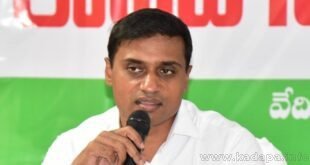

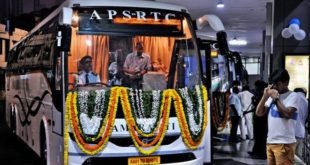
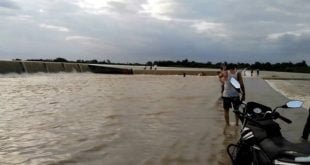
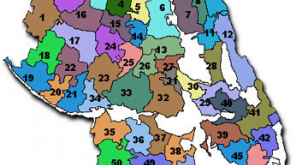
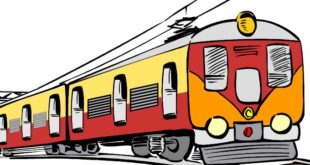
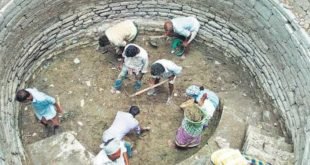
I personaly thank to you and request you please enter more about Rly.kodur history. what about past perfect. please enter all details of kadapa into gadapa